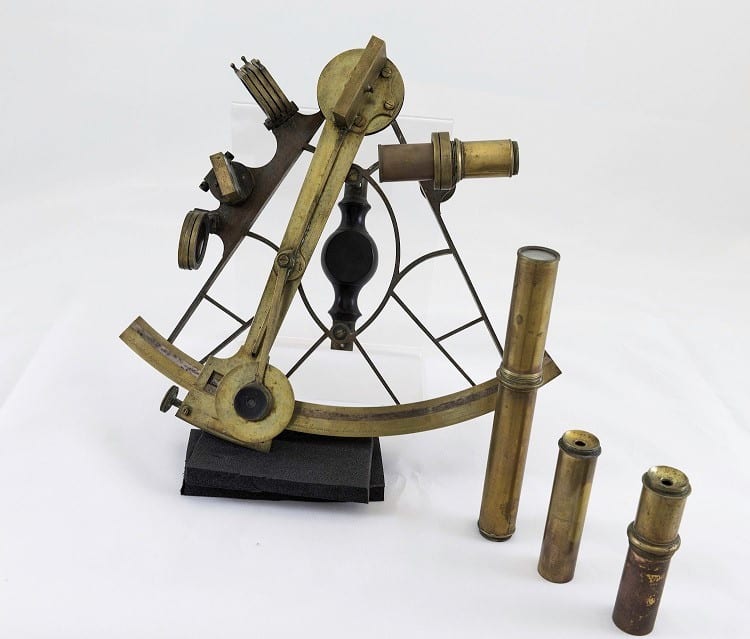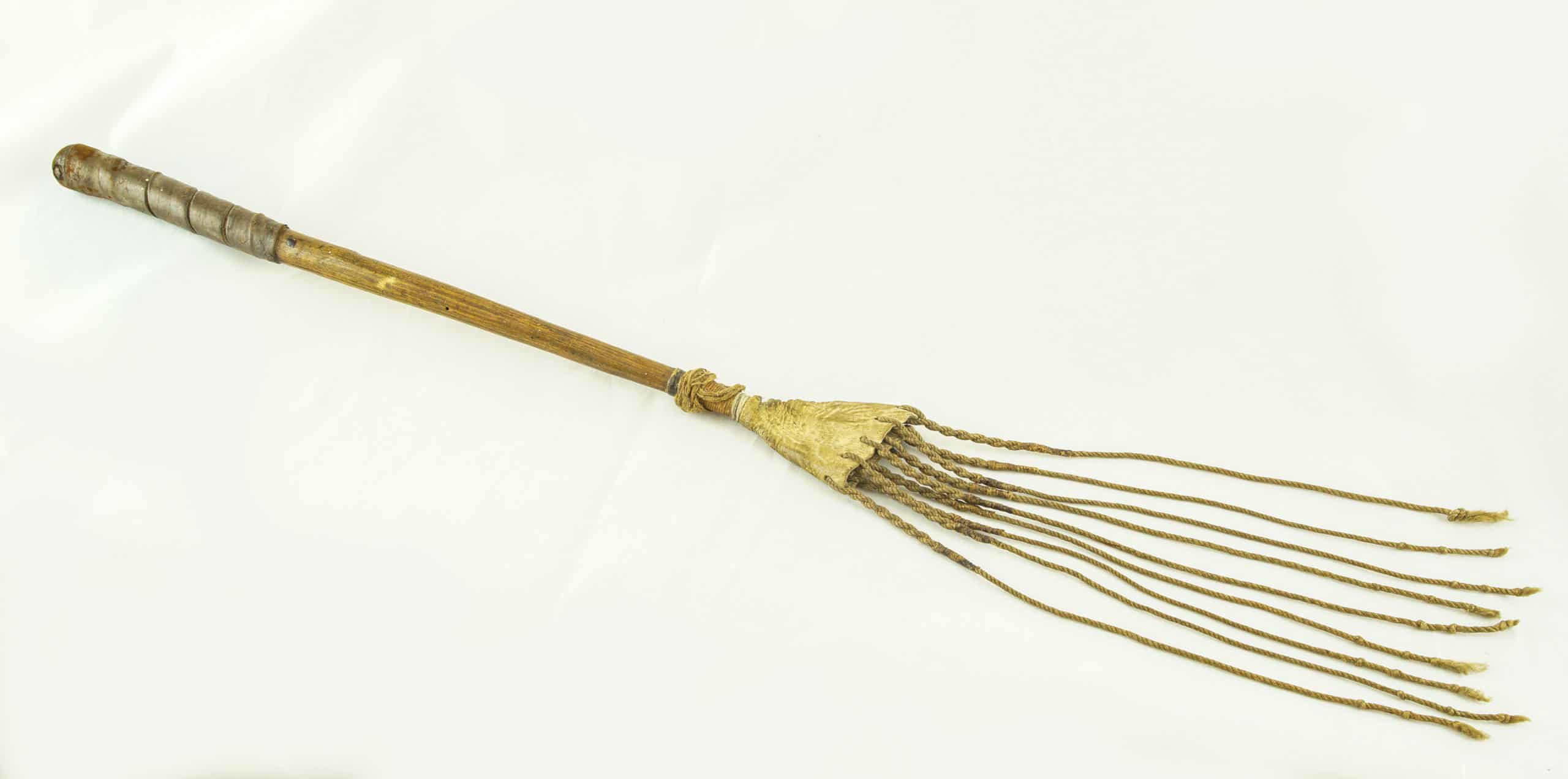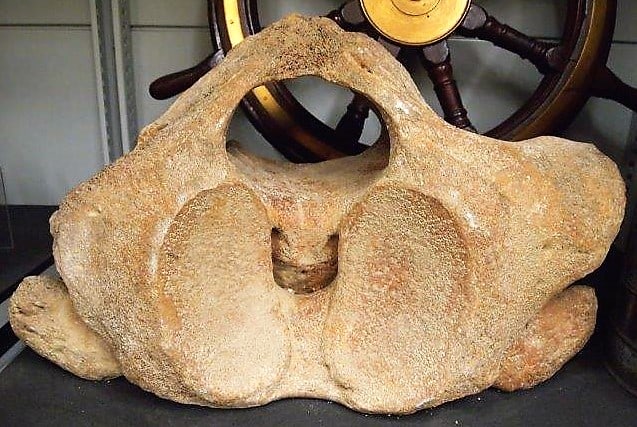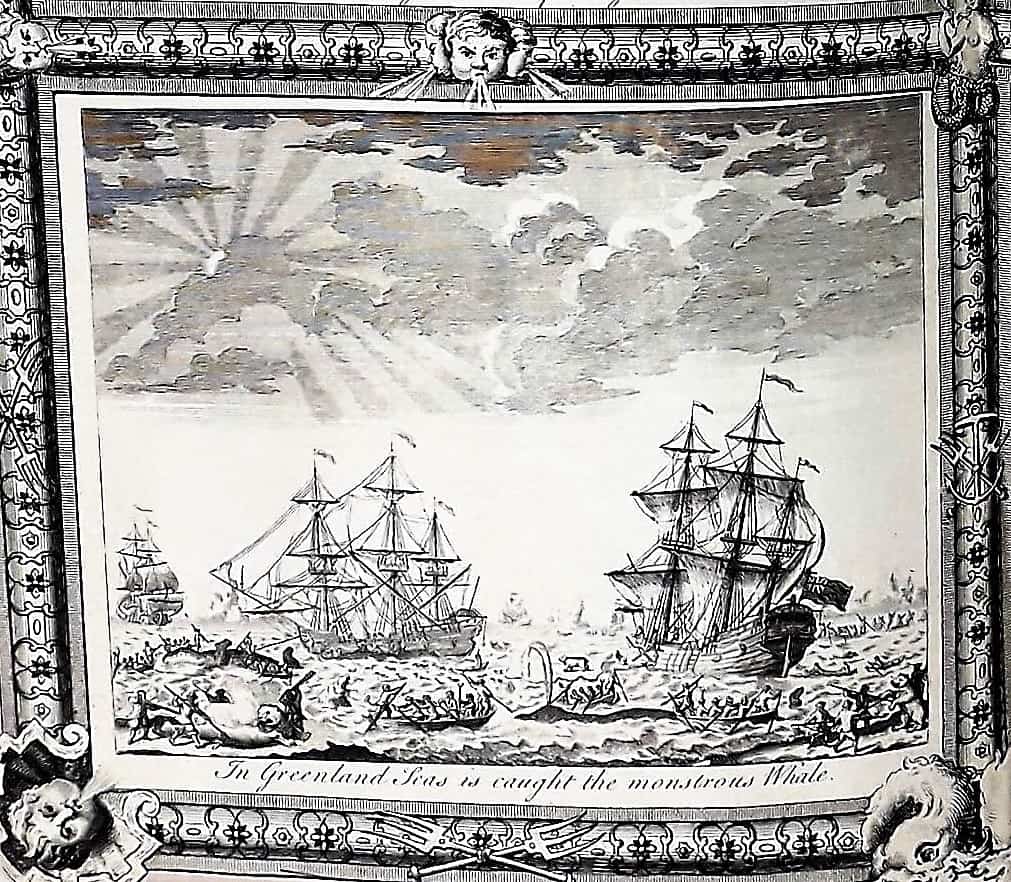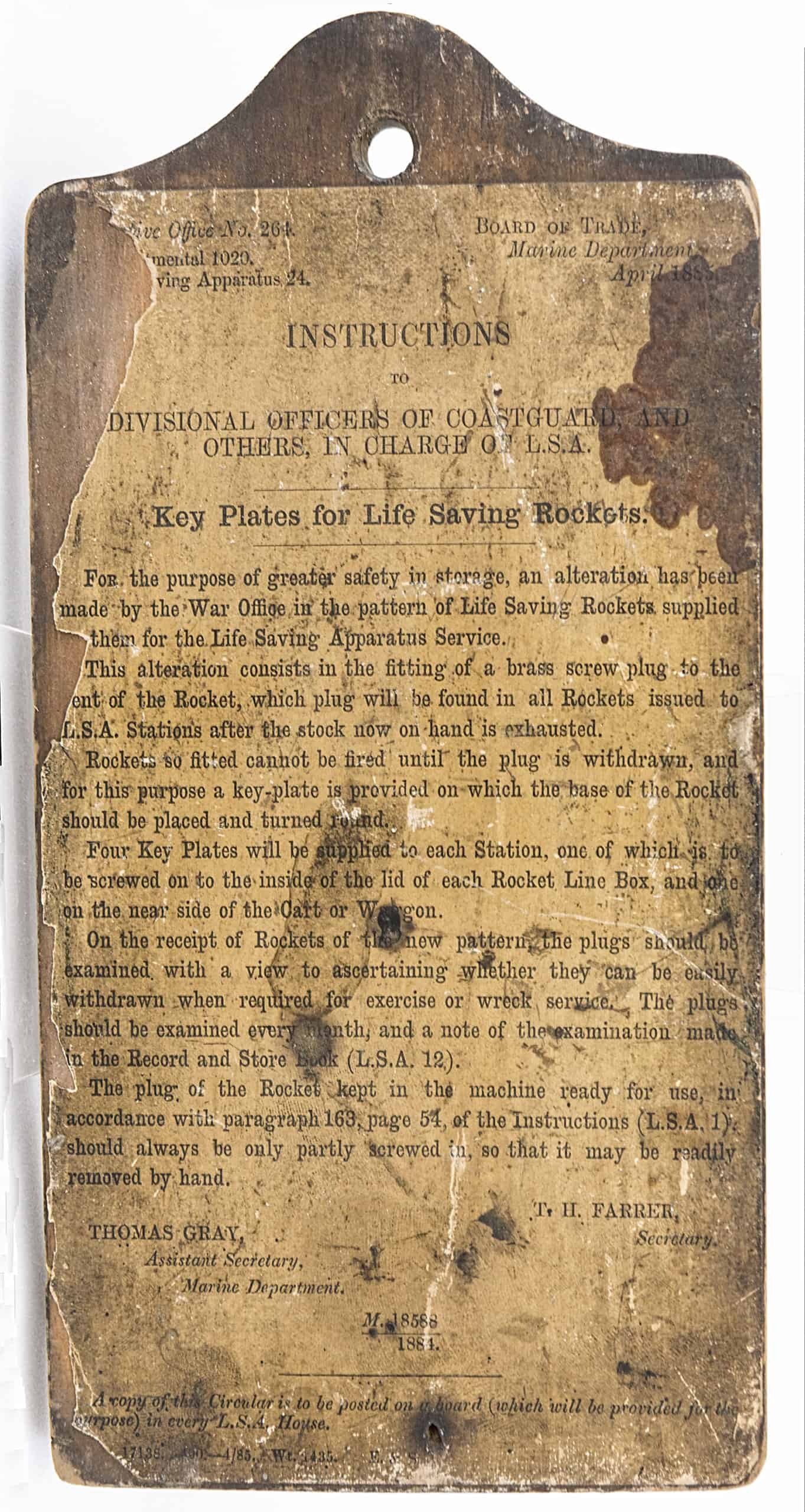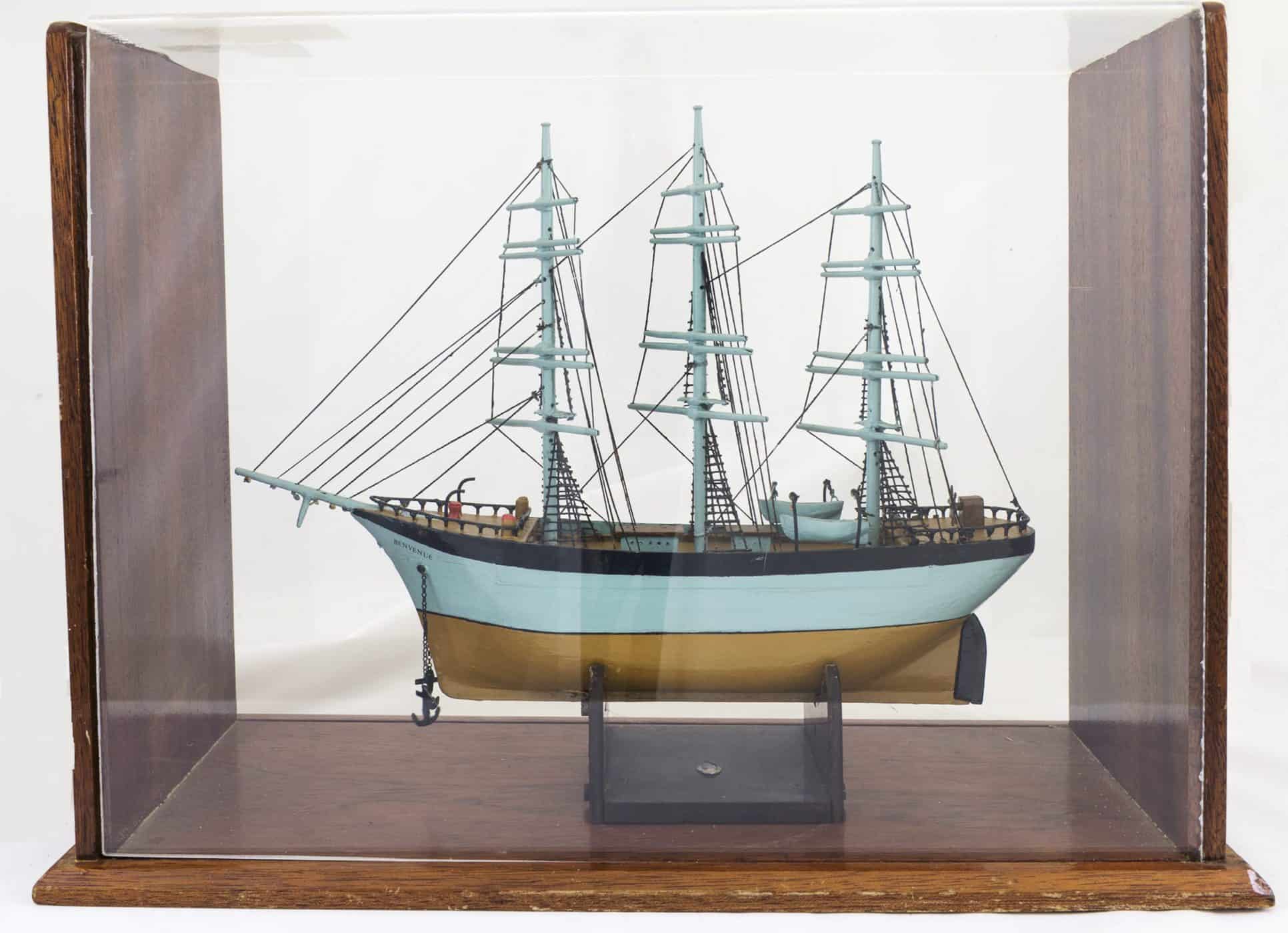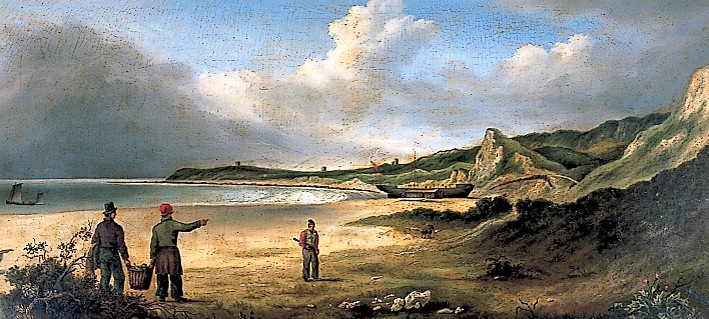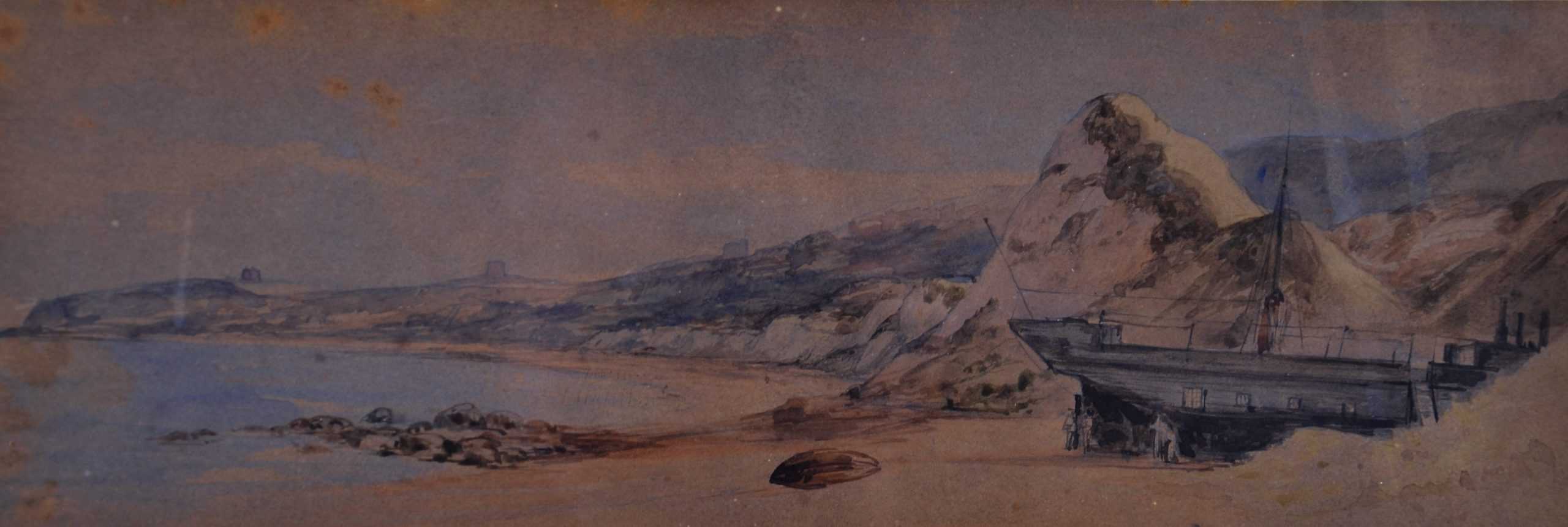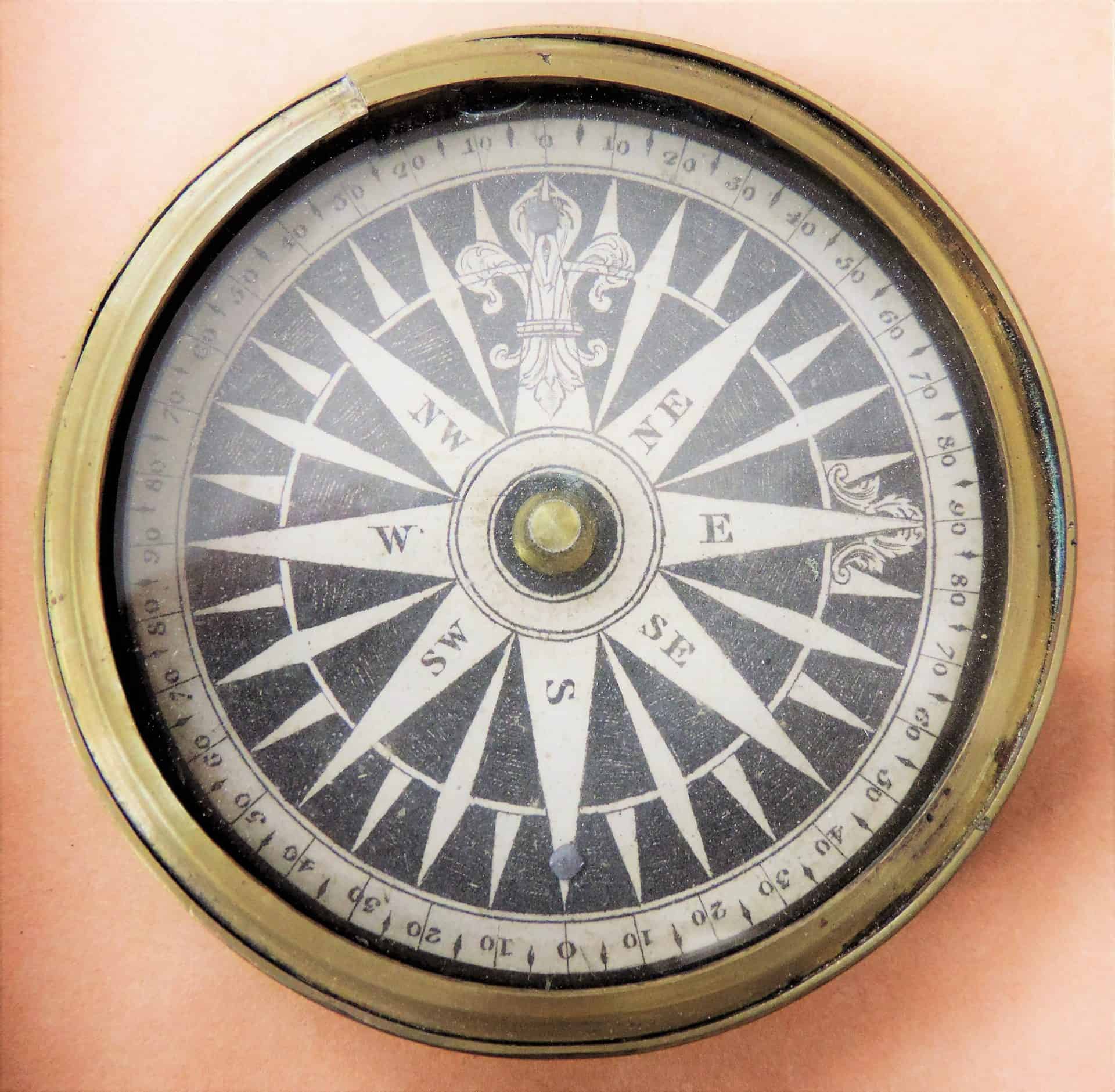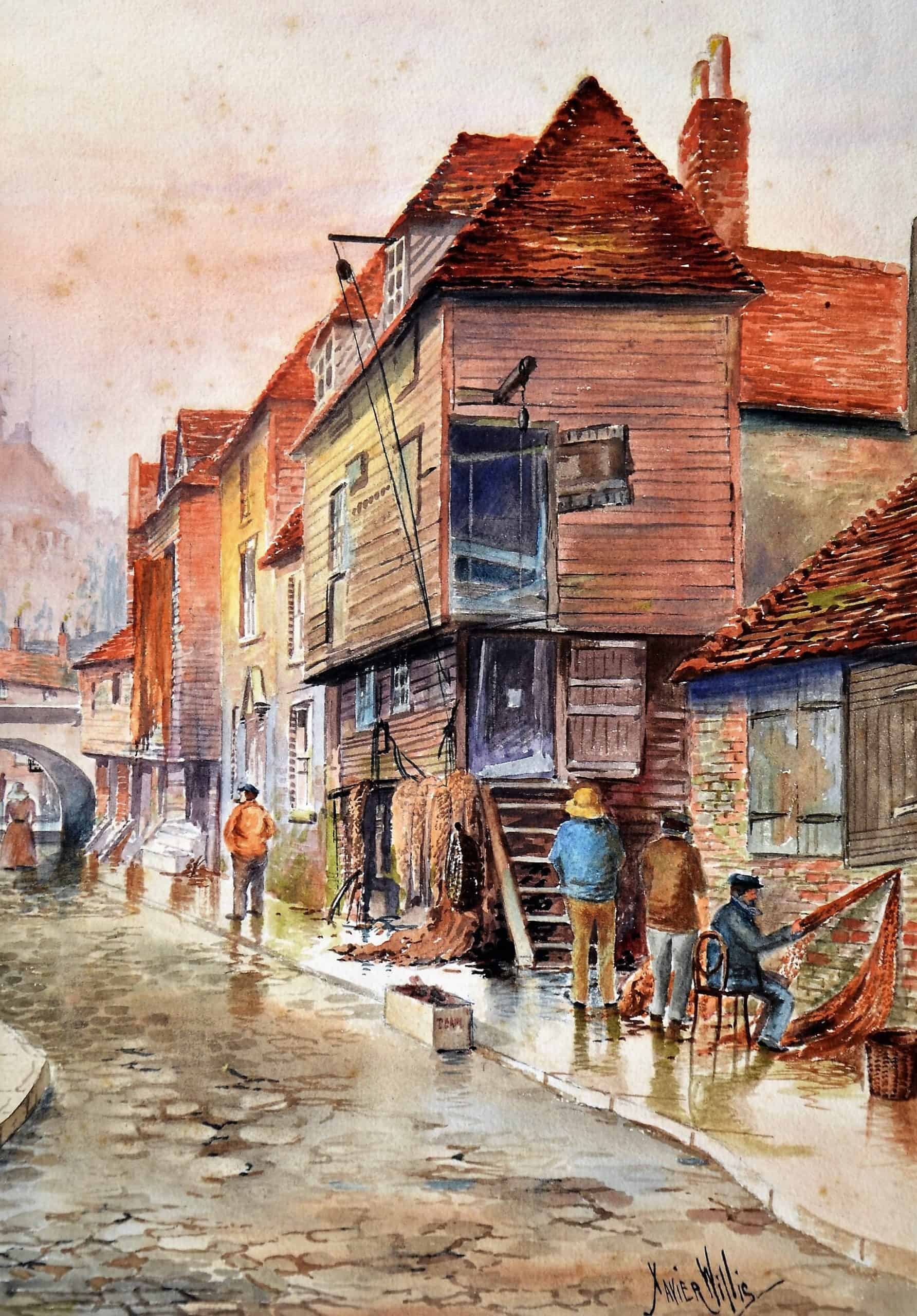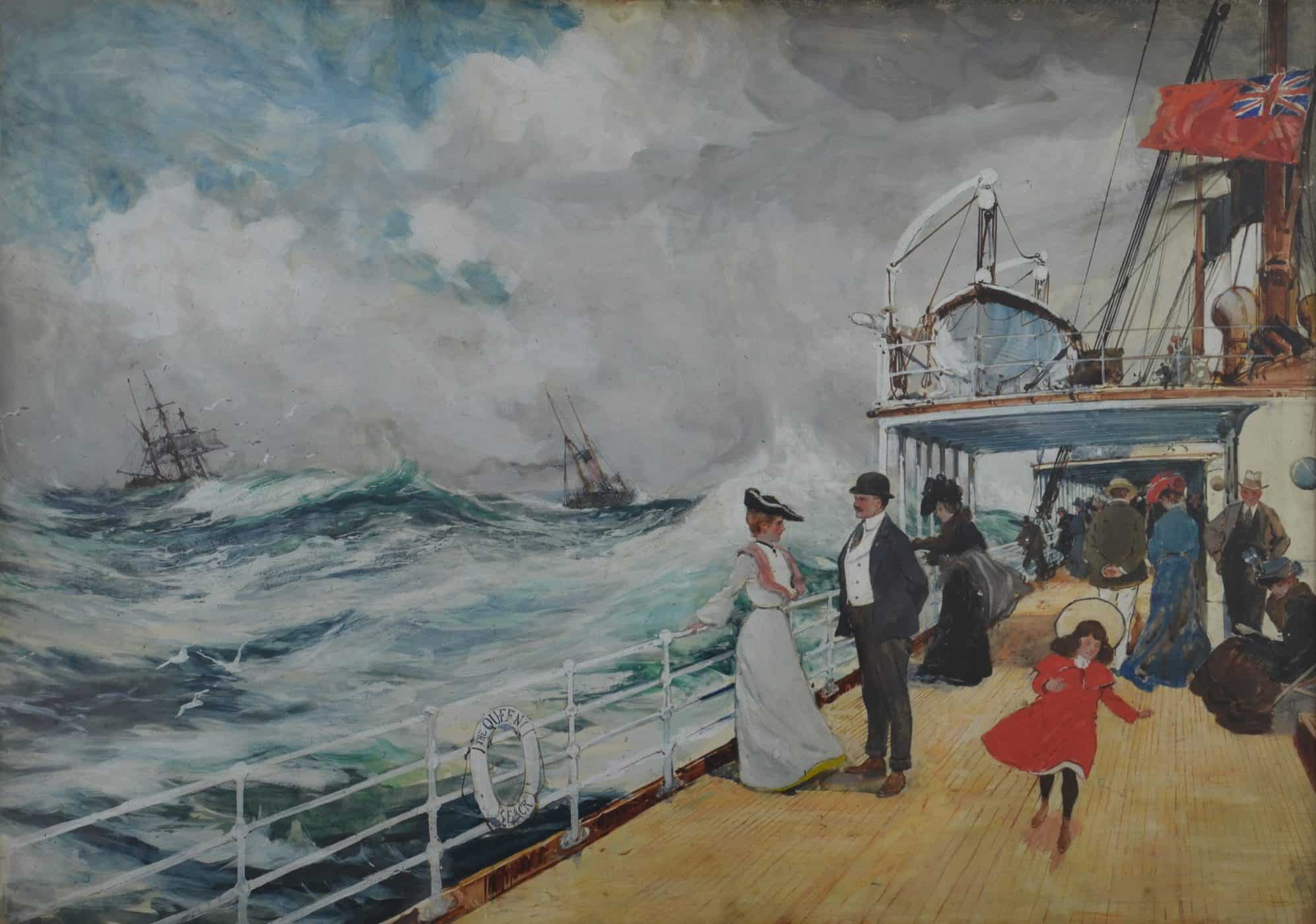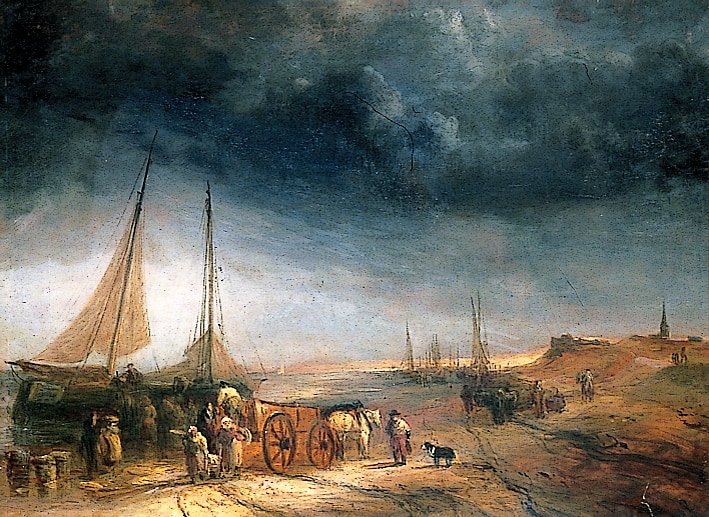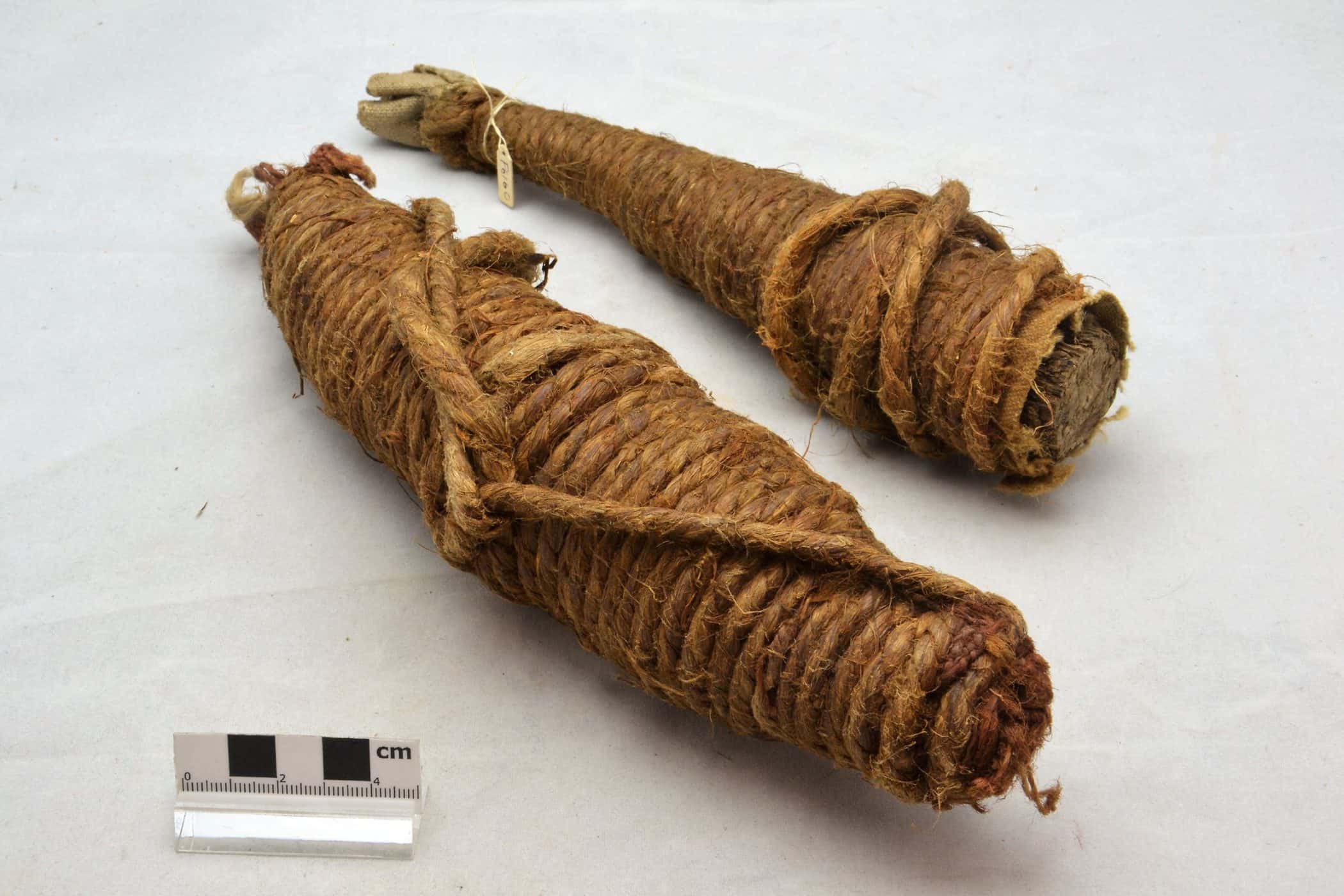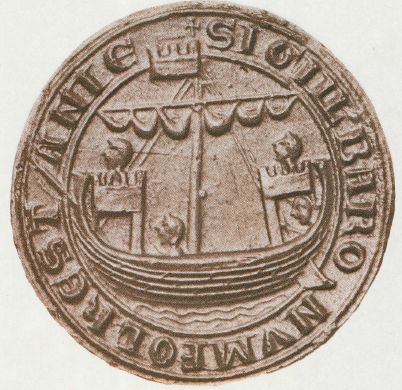Marine sextant presented by Greenwich Hospital to Stephen Court 1841 . Maker: Spencer Browing & Rust London. Stephen Court (1826-61) was a polar explorer who served with Parry in the search for the North West Passage, fought in the Crimean War and became the Shanghai Harbourmaster (1859-61). He died in Folkestone in 1861.
Object: Maritime
Cat o’ nine tails whip
A cat o’ nine tails, a whip with nine strands of rope, used to punish sailors in the Royal Navy in Napoleonic and Victorian times. Sailors were brought on deck for the punishment (known as a flogging) which was carried out in front of the whole crew.
Vertebra of North Atlantic Right Whale
A vertebra of a North Atlantic Right Whale. From the 17th to the 20th century, whales were hunted at sea for their valuable blubber and whale bone. The North Atlantic right whale got its name because it was the only kind that floated on the surface, and so was the right one to hunt, because it could be easily recovered. In Victorian times, blubber was rendered to make whale oil for street lamps and to light homes, and the whalebone used to provide the stiffening for ladies’ corsets.
Print – In Greenland seas is caught the monstrous whale
18th century print. In Greenland seas is caught the monstrous whale.
Life-saving coastguard rocket
A life-saving rocket – used by the Folkestone Coastguard in Victorian times to save lives from vessels wrecked close to the shore. The rockets were launched from the beach, attached to a length of rope, and aimed at the masts and rigging of the stricken ship. If a line was successfully fired across, a bosun’s chair (a canvas seat suspended on ropes) was attached by which passengers and crew were hauled one at a time back to shore.
Life-line throwing stick
Life line throwing stick. Thrown from the shore, or from a boat towards a drowning person, with a rope (the lifeline) attached through the loop. The person in distress would grab the lifeline and be pulled to safety. The lump of lead on the end made it easier to throw further and more accurately.
Life-saving rocket instructions
Life-saving rocket instructions – relating to the fitting of a new brass screw plate to the Life Saving Rocket apparatus to make it safer in storage. Presumably there had been accidents of the rocket going off before it was meant to, which could be extremely dangerous.
Oil painting – Pelter Brig in the Warren
Pelter Brig in The Warren by Charles Augustus Mornewick. An old wooden sailing ship known as The Pelter Brig was hauled high up the beach at Folkestone Warren, near Horse’s Head Rock, and used as a coastguard station – a base to catch smugglers – in the early 19th century. In the 1830s, John Anderson, a coastguard lived on board with his wife and 8 children. They shared the ship with 8 other families.
Oil painting – Sinkking of the Benvenue
Oil painting by Sebastian Foley showing the sinking of the Benvenue off Sandgate in 1891.
Water colour – Pelter Brig
A watercolour of the Pelter Brig painted by George Wallis in 1851. An old wooden sailing ship known as The Pelter Brig was hauled high up the beach at Folkestone Warren, near Horse’s Head Rock, and used as a coastguard station – a base to catch smugglers – in the early 19th century. In the 1830s, John Anderson, a coastguard lived on board with his wife and 8 children. They shared the ship with 8 other families.
Illustrated London News – Benvenue shipwreck
Front cover illustration from the Illustrated London News, Saturday 21 November 1891, showing the crew of the Sandgate lifeboat rescuing sailors from the rigging of the Benvenue shipwrecked off Sandgate beach.
Ship’s compass
Ship’s compass. Belonged to Captain John Elgar (1754-1829), a local seaman and captain of a hoy.Marked off in 32 points of the compass and in degrees. North represented by a fleur-de-lis, east by stylised leaves.
Watercolour – Folkestone Harbour
In the Harbour. Watercolour of fishing boats and fishermen at low tide in Folkestone Harbour by E A Cox.
Lithograph – Folkestone Harbour
Lithograph of a bustling Folkestone Harbour viewed from The Durlochs. By C Creed, Newman and Co . An early steam train is visible coming across the harbour bridge.The railway arrived in Folkestone in 1843, so it must be after that date.
Oil painting – Landing the Catch
Landing the Catch. Oil painting by E D Roberts, of fishermen bringing the catch ashore at Folkestone Harbour in 1955.
Oil painting – Dogfish Season
Dogfish Season. In this 1935 oil painting by Charles Padday (1868-1954) fishermen are cleaning dogfish, before packing them in wooden barrels at Folkestone Fish Market. The barrels were sent to inland towns and cities by train. Salted dried dogfish steaks were a staple diet of Folkestone fishermen and were known as ‘Folkestone Beef.’
Watercolour – Old Town, Folkestone
Watercolour of the Old Town, Folkestone by Xavier Willis, showing fishermen’s houses on The Stade. A fisherman can be seen outside mending his nets.
Watercolour – On board theQueen
On board The Queen , by Charles Dixon 1902. The SS Queen was a cross-Channel steamer operated by the South East and Chatham Railway from Folkestone to Boulogne. The painting, created for a poster to advertise the service, shows a lively day at sea, with big waves and white water. Despite this, fashionably dressed passengers seem to be enjoying themselves on deck.
Oil painting of smugglers
A large group are unloading barrels from sailing boats run onto the beach.The impression is they are smugglers, illegally importing contraband (smuggled goods which included barrels of brandy, tobacco and French lace) across the Channel from France without paying taxes
Tobacco twist wrapped in rope
Tobacco twist wrapped in rope. Possibly, asmugger’s device to hide it from the Revenuemen.
Folkestone Town Council banner
Folkestone Town Council banner. Silk banner of a medieval fighting ship (the symbol of the Cinque Ports) and the badge of Folkestone, which was a Limb of Dover. This banner appears in The Arrival of the Belgian Refugees painting, by Fredo Franzoni, on display at Folkestone Museum, so was in use in 1914, when they arrived.
Seal of Folkestone
Town seal of Folkestone. The seal is of a medieval fighting ship, representing the town’s status as a Limb of the Cinque Ports.

